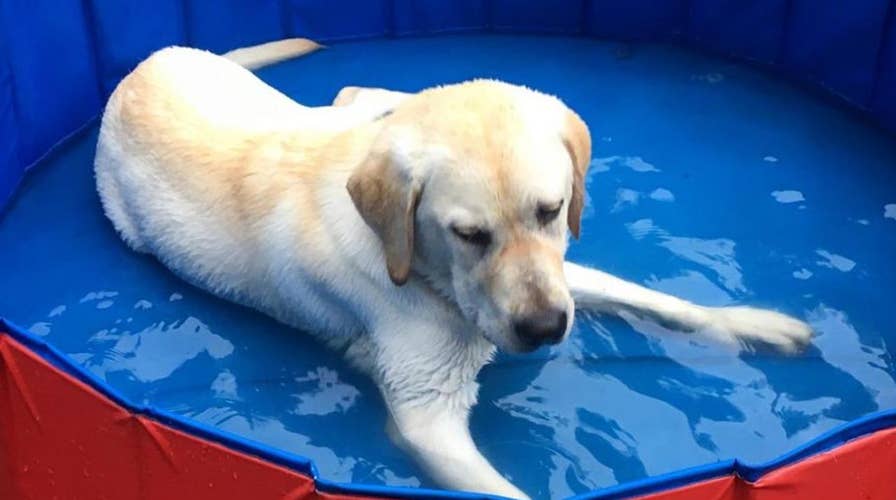Pool party!
When I was on vacation in Alaska, the weather in New York and New Jersey was pretty hot and humid. I got frequent photos of Spike and his brother Swain — who are being raised as service dogs for Canine Companions for Independence — playing in a kiddie pool of Swain’s puppy-raisers, Caryl and Kerry Swain. They loved splashing around and tackling each other. But most importantly, it helped keep them cool.
WHY ONE FAMILY CHOSE TO RAISE A SERVICE DOG, AND WHY ALL FAMILIES SHOULD CONSIDER IT
Photos of Spike smiling or "laughing" on Instagram always get the most likes — who doesn’t love a laughing dog? But dogs are really panting when they’re laughing, and that’s a good thing: It turns out dogs only have a few sweat glands in their foot pads, so they rely on panting to cool down.
And staying cool prevents heat stroke.
Older dogs, overweight dogs and puppies are the most vulnerable, but even young, otherwise healthy dogs can succumb to heat stroke. Canine Companions for Independence's veterinarian gave me the following tips about heat stroke warning signs and prevention:
Warning signs of heat stroke
- Excessive panting or erratic breathing
- Stumbling or dizziness
- Less responsive to commands than usual
- Sluggishness
- Hypersalivation
- Vomiting or diarrhea (possibly with blood)
- Gums that are bright red, pale or bluish in color
What to do if you suspect heat stroke
Move out of the sun or hot area immediately and relocate to a shaded or air-conditioned location.
Start cooling measures and take the dog to a veterinarian immediately. To cool the dog, spray them with cool (not cold) water or place sopping towels soaked in cool water over the dog's body. Turn the air-conditioning on in the car or open the windows to create a breeze while driving to the veterinary clinic. It is important to expose a dog to cool water, and not cold water or ice, as the latter two can shock the body and lead to core body heat retention.
FOLLOW US ON FACEBOOK FOR MORE FOX LIFESTYLE NEWS
Prevention
- Never leave a dog in a car, even on seemingly mild (60–70 degree F or less) days. Temperatures inside a car can easily rise 40 F within minutes on sunny days, despite leaving the windows cracked open. Humid days also increase the likelihood of heat stroke.
- Don’t let a dog over-exert during play. Dogs can easily play too hard or too long unless you intervene, even on days that are not excessively warm.
- Always allow access to fresh water.
- Schedule walks for cooler times of the day and stay in shady areas.
- On hot days, walk dogs on grassy areas rather than asphalt and concrete, which absorb heat and can cause second-degree burns on paw pads.
THINGS TO REMEMBER WHEN SENDING YOUR PUP ON 'VACATION'
Any dog that is suspected to be affected by heat stroke should be evaluated by a veterinarian as soon as possible, even if they seem to have fully recovered from the episode. Heat stroke can cause serious damage to internal organs and requires prompt treatment.
Now, if only i could find a way to make space for a kiddie pool in my NYC apartment for Spike...
Jennifer Williams is the executive producer for “The Daily Briefing with Dana Peirno” and writer behind “The Daily Spike."
For more information on Canine Companions for Independence, visit CCI.org.


